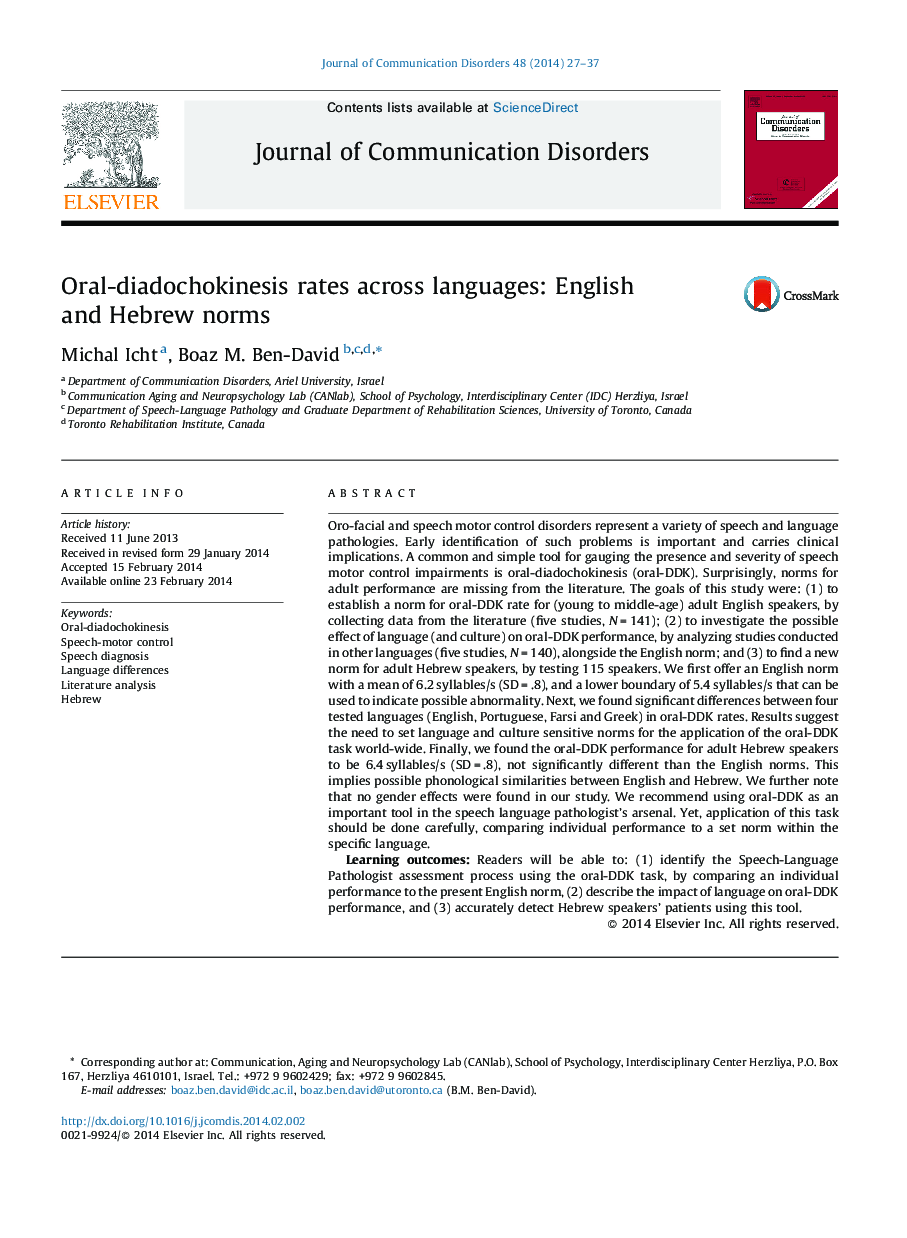| Article ID | Journal | Published Year | Pages | File Type |
|---|---|---|---|---|
| 910818 | Journal of Communication Disorders | 2014 | 11 Pages |
•We examined 5 studies and 141 English speakers oral-DDK rate.•English norm is 6.23 syllables/s (SD = .81), with a lower boundary of 5.4.•We examined 5 oral-DDK studies (N = 140) in three other languages.•We observe a significant between-language variation in oral-DDK rate.•Hebrew (N = 115) oral-DDK mean rate and thresholds are similar to the English norm.
Oro-facial and speech motor control disorders represent a variety of speech and language pathologies. Early identification of such problems is important and carries clinical implications. A common and simple tool for gauging the presence and severity of speech motor control impairments is oral-diadochokinesis (oral-DDK). Surprisingly, norms for adult performance are missing from the literature. The goals of this study were: (1) to establish a norm for oral-DDK rate for (young to middle-age) adult English speakers, by collecting data from the literature (five studies, N = 141); (2) to investigate the possible effect of language (and culture) on oral-DDK performance, by analyzing studies conducted in other languages (five studies, N = 140), alongside the English norm; and (3) to find a new norm for adult Hebrew speakers, by testing 115 speakers. We first offer an English norm with a mean of 6.2 syllables/s (SD = .8), and a lower boundary of 5.4 syllables/s that can be used to indicate possible abnormality. Next, we found significant differences between four tested languages (English, Portuguese, Farsi and Greek) in oral-DDK rates. Results suggest the need to set language and culture sensitive norms for the application of the oral-DDK task world-wide. Finally, we found the oral-DDK performance for adult Hebrew speakers to be 6.4 syllables/s (SD = .8), not significantly different than the English norms. This implies possible phonological similarities between English and Hebrew. We further note that no gender effects were found in our study. We recommend using oral-DDK as an important tool in the speech language pathologist's arsenal. Yet, application of this task should be done carefully, comparing individual performance to a set norm within the specific language.Learning outcomes: Readers will be able to: (1) identify the Speech-Language Pathologist assessment process using the oral-DDK task, by comparing an individual performance to the present English norm, (2) describe the impact of language on oral-DDK performance, and (3) accurately detect Hebrew speakers’ patients using this tool.
